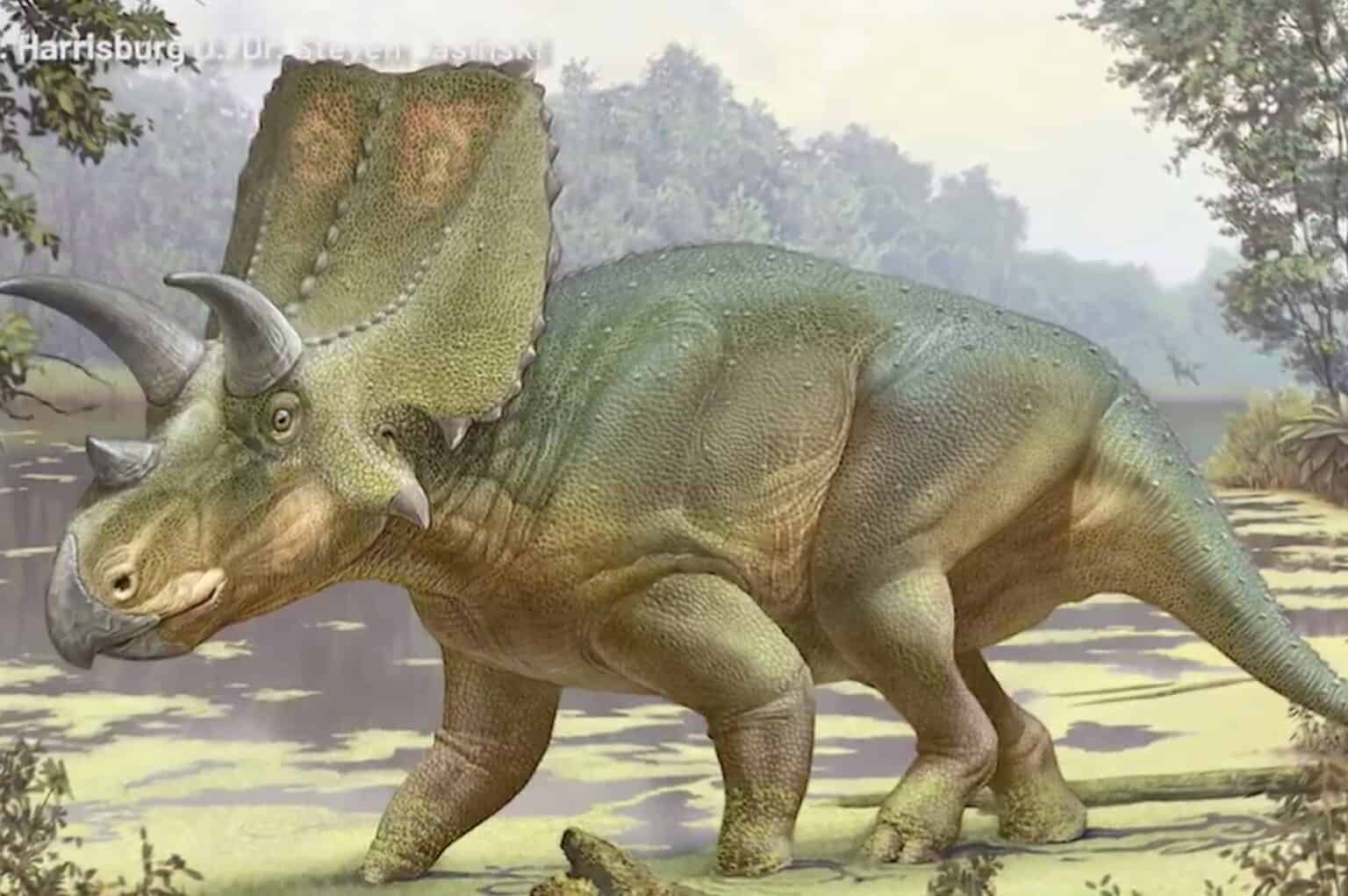Scientists have documented a new chasmosaurine ceratopsid, officially named Sierraceratops turneri, from the Upper Cretaceous (latest Campanian–Maastrichtian) Hall Lake Formation of south-central New Mexico.
Sierraceratops is distinguished by its relatively short, robust, and mediolaterally compressed postorbital horns; a flattened medial ridge on the posterior end of the pterygoid; a jugal with pronounced anterior flanges; a long pyramid-shaped epijugal horncore; a D-shaped cross section of the median parietal bar; and a squamosal with a pointed tip and low episquamosal ossifications. Phylogenetic analysis recovers Sierraceratops as sister to Bravoceratops and Coahuilaceratops, part of a clade endemic to the southwestern United States and Mexico.
Sierraceratops is distinguished by its relatively short, robust, and mediolaterally compressed postorbital horns; a flattened medial ridge on the posterior end of the pterygoid; a jugal with pronounced anterior flanges; a long pyramid-shaped epijugal horncore; a D-shaped cross section of the median parietal bar; and a squamosal with a pointed tip and low episquamosal ossifications. Phylogenetic analysis recovers Sierraceratops as sister to Bravoceratops and Coahuilaceratops, part of a clade endemic to the southwestern United States and Mexico.
source: sciencedirect.com
According to Dr. Steven E. Jasinski, Professor of Environmental Science and Sustainability at Harrisburg University of Science and Technology, the bones were first found in the 1980s, but study did not commence until around 2015. And while most fossils discoveries consist of single bones, the Sierraceratops fossil includes about 1/4 of the dinosaur’s skeleton.
Identification was made by comparing bones to other specimens in museum collections. Differences in the bone coming off the cheek and the frill at the back of the dinosaur’s head informed the scientists that the specimen was not a Torosaurus, as originally thought. Rather, the specimen was found to be an altogether new species, in an entirely new genus — a genus that includes only one species so far.
The species name turneri is for Ted Turner, who owns the land where the fossil was found, and who granted permission for the study to commence. The recently-published study required two years of writing followed by approximately a year of scientific review.

